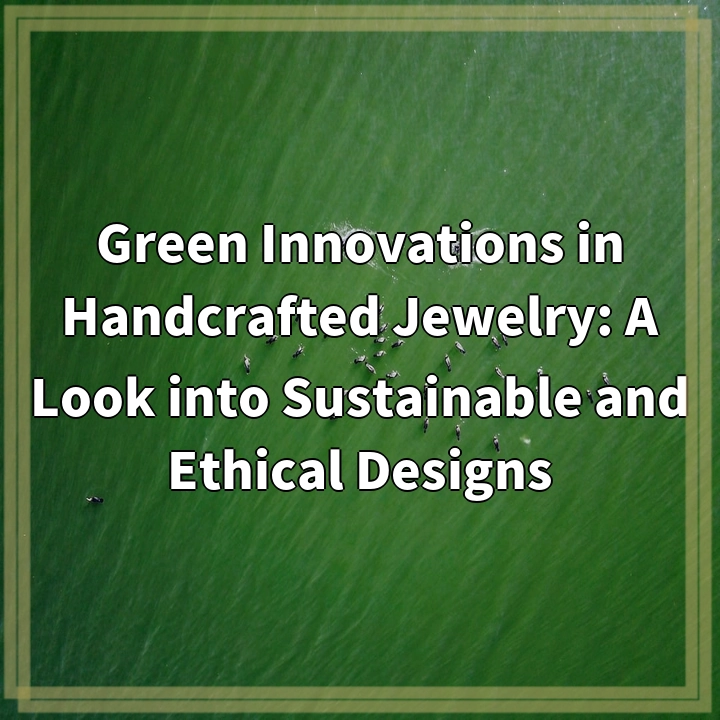
What it is:
Green Innovations in Handcrafted Jewelry refers to the growing trend of sustainable and ethical practices within the jewelry industry. As consumers become more conscious about the environmental and social impact of their purchases, there has been an increasing demand for jewelry that is created with minimal harm to the planet and respects the rights and well-being of the artisans involved. This shift towards sustainability and ethics has led to the emergence of innovative approaches and materials in the creation of handcrafted jewelry.
Real-World Problems:
While the world of handcrafted jewelry offers unique and stunning pieces, it is not without its challenges. Traditional jewelry production often involves the extraction of precious metals and gemstones through environmentally destructive processes, such as open-pit mining and the use of toxic chemicals. This can result in deforestation, habitat destruction, water pollution, and harm to local communities.
Furthermore, the lack of transparency in the supply chain often means that many jewelry pieces are created under unethical conditions. This includes exploitative labor practices, unsafe working conditions, and unfair wages for artisans. In some cases, gemstones may even be sourced from conflict regions or through child labor.
These real-world problems associated with handcrafted jewelry highlight the urgent need for sustainable and ethical practices within the industry. It is crucial to find innovative solutions that minimize environmental impact, promote fair trade, and empower local communities.

Solutions:
1. Sustainable Material Sourcing:
One solution to the environmental impact of handcrafted jewelry is the use of sustainable materials. Artisans are exploring alternatives to traditional metals and gemstones, such as recycled or upcycled materials, fair-trade gold, and ethically sourced gemstones. This reduces the need for new mining and minimizes the ecological footprint of jewelry production.
2. Eco-Friendly Production Processes:
Implementing eco-friendly production processes is another important solution. This involves minimizing water and energy usage, as well as reducing the use of hazardous chemicals. Utilizing efficient technologies and adopting responsible waste management practices can greatly reduce the environmental impact of jewelry creation.
3. Ethical Supply Chain:
Ensuring transparency and ethical practices throughout the supply chain is crucial. Artisans and designers are working towards establishing direct relationships with suppliers, verifying the origin of materials, and supporting fair-trade initiatives. By doing so, they can guarantee that their jewelry is produced under safe and ethical conditions.
4. Consumer Education and Awareness:
Educating consumers about the importance of choosing sustainable and ethical jewelry is a vital solution. By raising awareness about the environmental and social impact of traditional jewelry production, individuals can make more informed purchasing decisions. Supporting brands and designers who prioritize sustainability and ethics will drive positive change in the industry.















